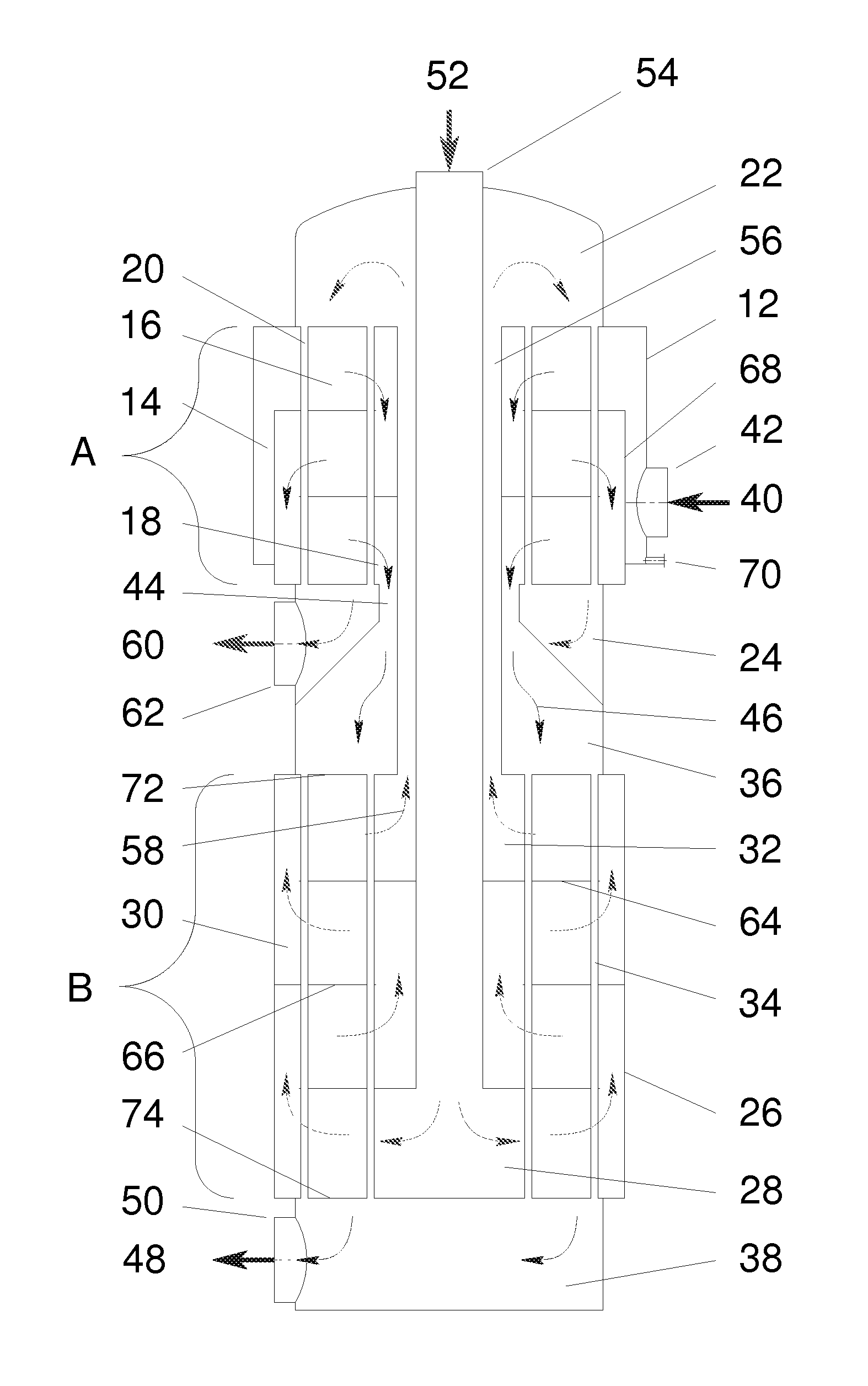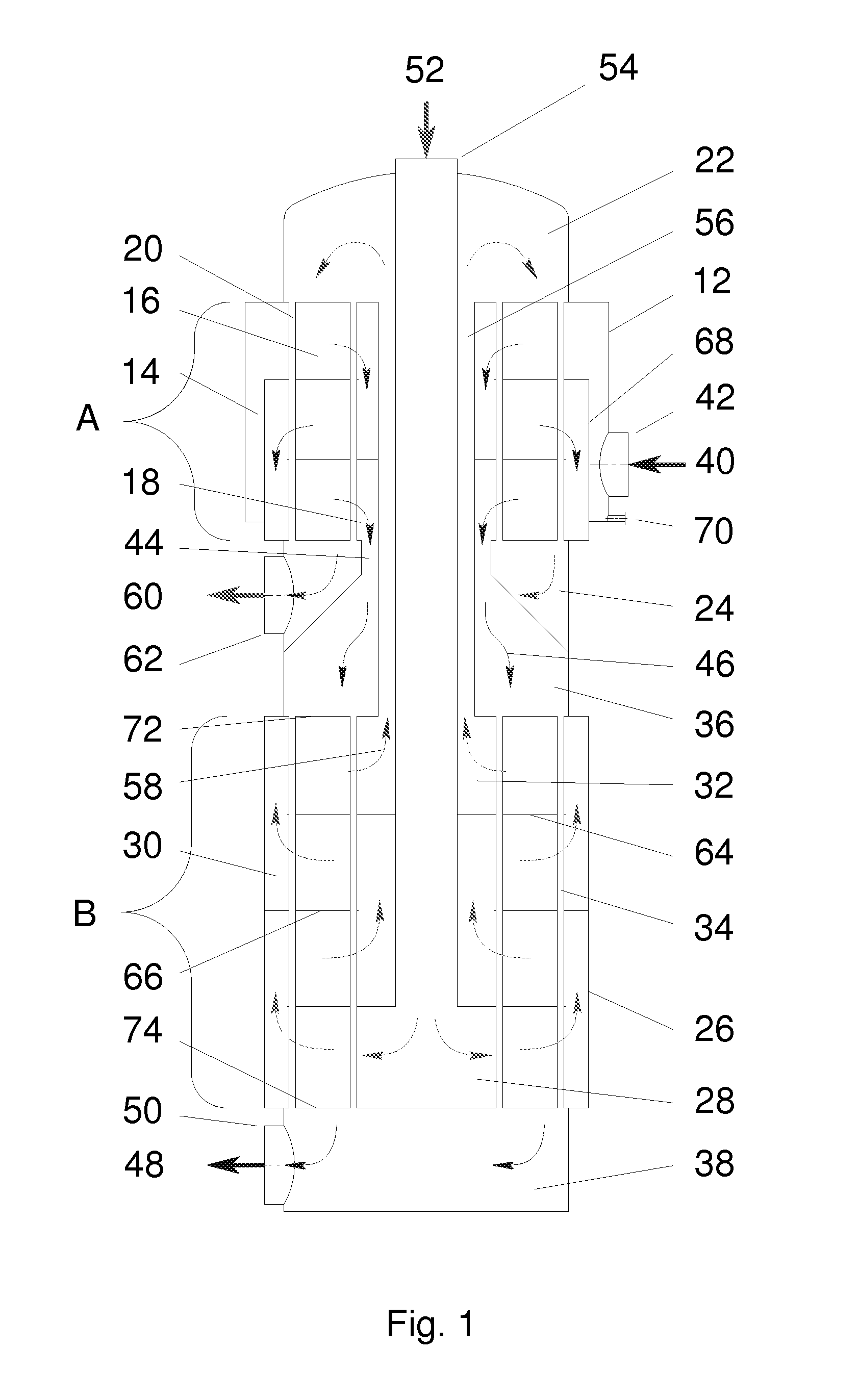Shell And Tube Heat Exchangers
- Summary
- Abstract
- Description
- Claims
- Application Information
AI Technical Summary
Benefits of technology
Problems solved by technology
Method used
Image
Examples
Embodiment Construction
[0055]FIG. 1 shows a typical arrangement of a heat exchanger according to the invention comprised of two heat exchange sections, being parallel-flow section A and counter-flow section B.
[0056]Parallel flow section A is comprised of parallel flow shell 12, contained within which is parallel flow shell side inlet vestibule 14, parallel flow shell side 16, and parallel flow shell side outlet vestibule 18 where through said parallel flow shell side 16 there passes parallel flow section tubes 20 connecting parallel flow tube side inlet vestibule 22 and parallel flow tube side outlet vestibule 24.
[0057]Counter flow section B is comprised of counter flow shell 26, contained within which is counter flow shell side inlet vestibule 28, counter flow shell side 30, and counter flow shell side outlet vestibule 32 where through said counter flow shell side 30 there passes counter flow section tubes 34 connecting counter flow tube side inlet vestibule 36 and counter flow tube side outlet vestibule...
PUM
 Login to View More
Login to View More Abstract
Description
Claims
Application Information
 Login to View More
Login to View More - R&D
- Intellectual Property
- Life Sciences
- Materials
- Tech Scout
- Unparalleled Data Quality
- Higher Quality Content
- 60% Fewer Hallucinations
Browse by: Latest US Patents, China's latest patents, Technical Efficacy Thesaurus, Application Domain, Technology Topic, Popular Technical Reports.
© 2025 PatSnap. All rights reserved.Legal|Privacy policy|Modern Slavery Act Transparency Statement|Sitemap|About US| Contact US: help@patsnap.com



